
How to Use ESP32 (30 pin): Examples, Pinouts, and Specs
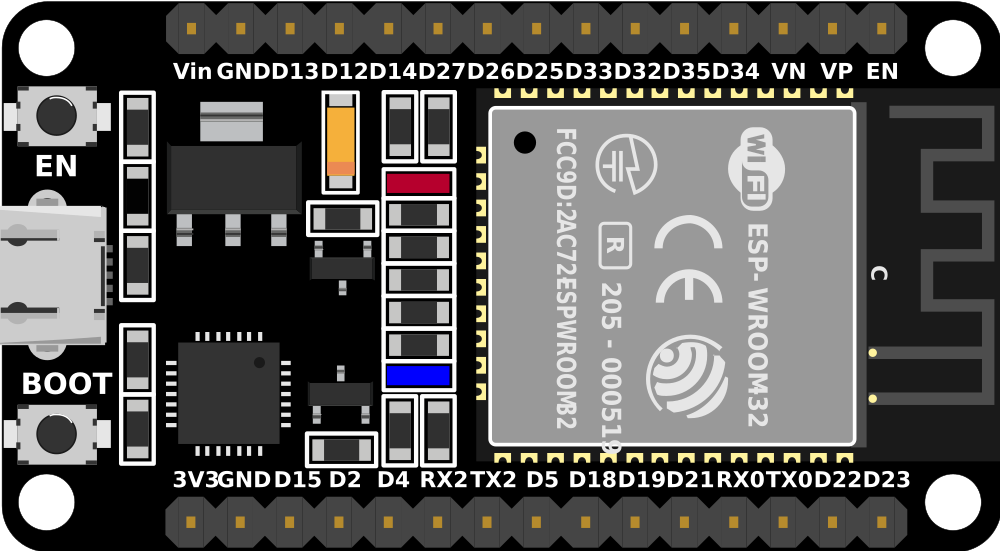
 Design with ESP32 (30 pin) in Cirkit Designer
Design with ESP32 (30 pin) in Cirkit DesignerIntroduction
The ESP32, manufactured by Espressif, is a powerful and versatile microcontroller designed for IoT (Internet of Things) applications and embedded systems. It features built-in Wi-Fi and Bluetooth capabilities, making it an excellent choice for wireless communication projects. With its 30-pin configuration, the ESP32 provides a wide range of GPIO (General Purpose Input/Output) pins, ADC (Analog-to-Digital Converter) channels, and other peripherals, enabling developers to create complex and efficient systems.
Explore Projects Built with ESP32 (30 pin)
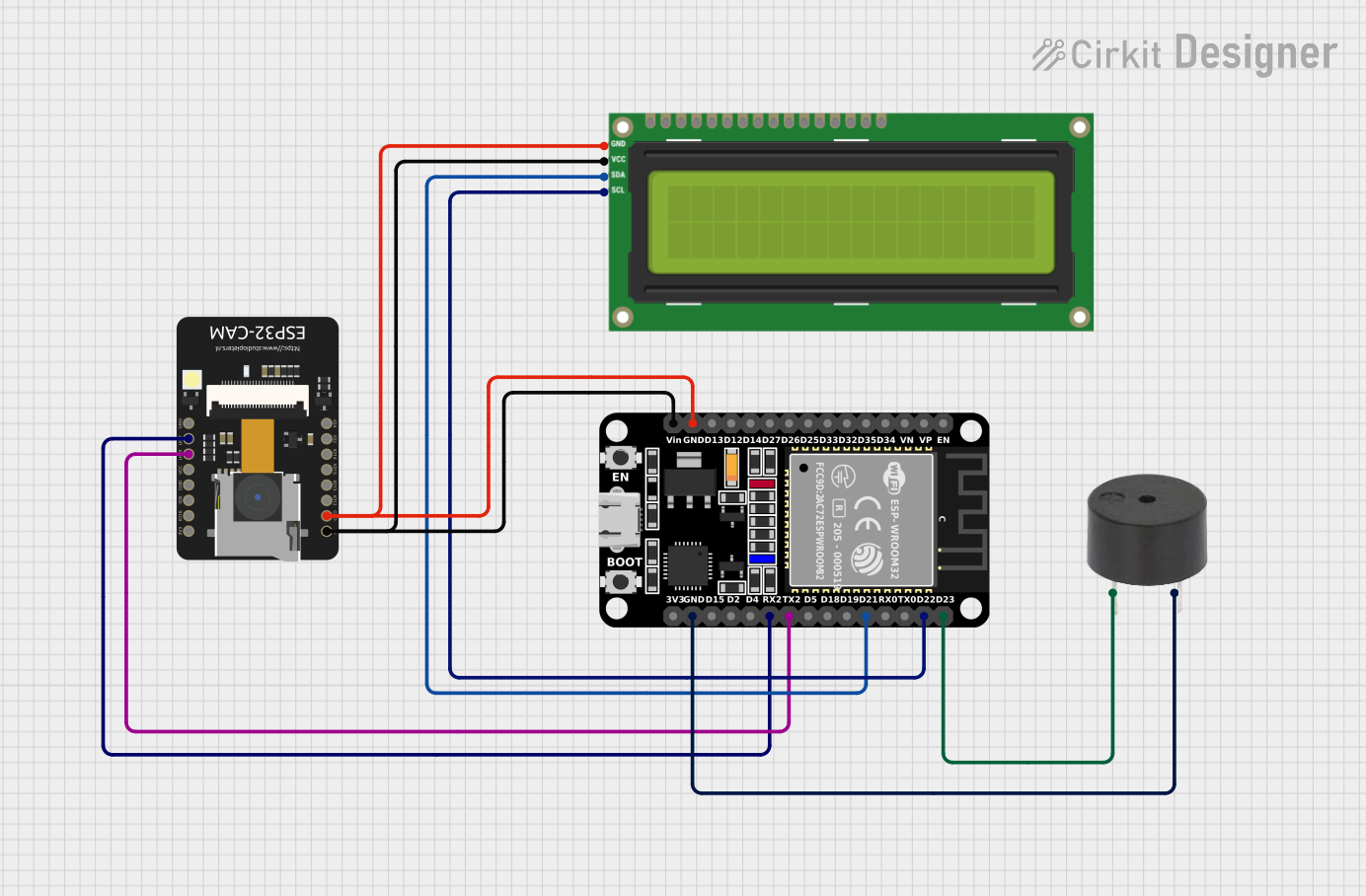
 Open Project in Cirkit Designer
Open Project in Cirkit Designer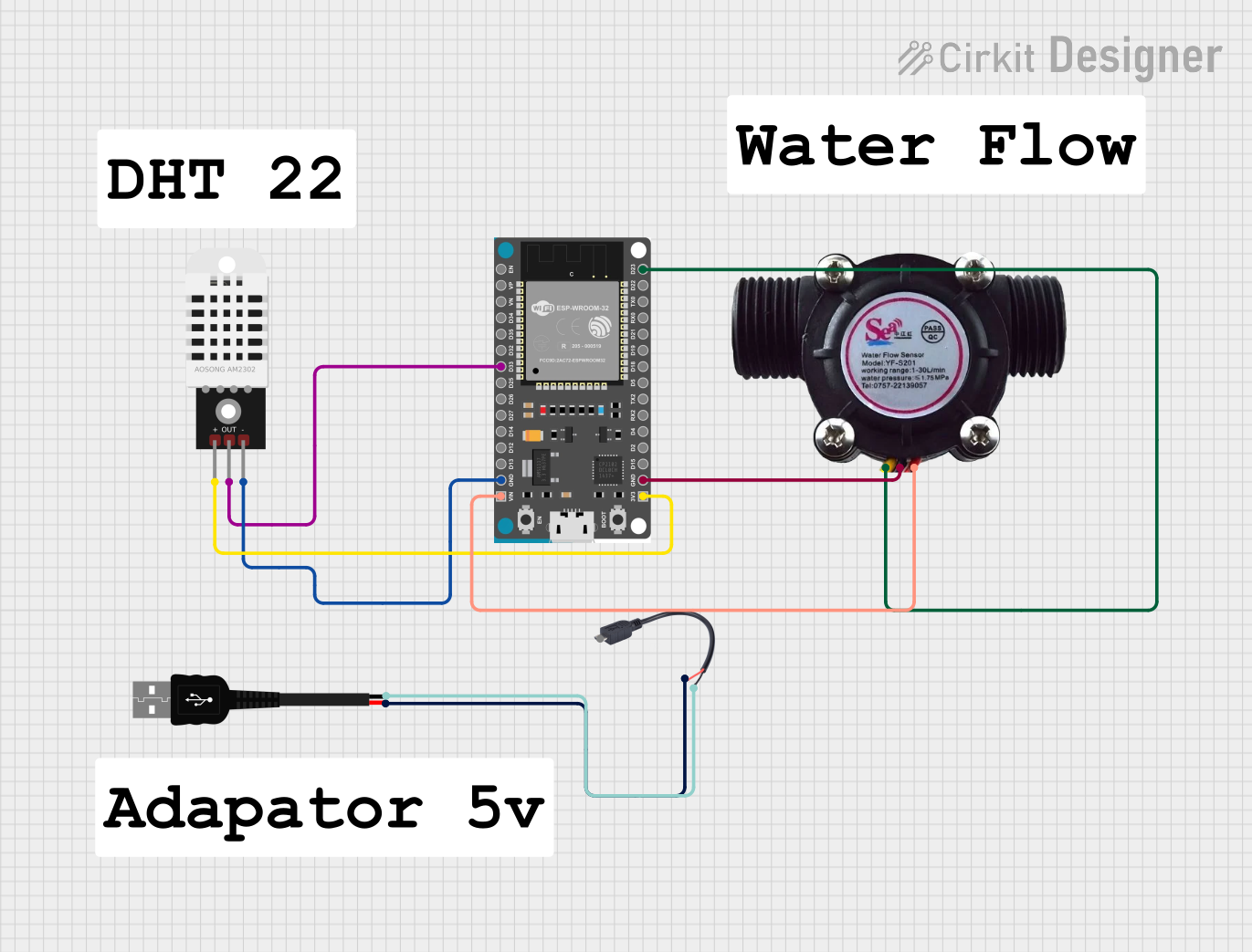
 Open Project in Cirkit Designer
Open Project in Cirkit Designer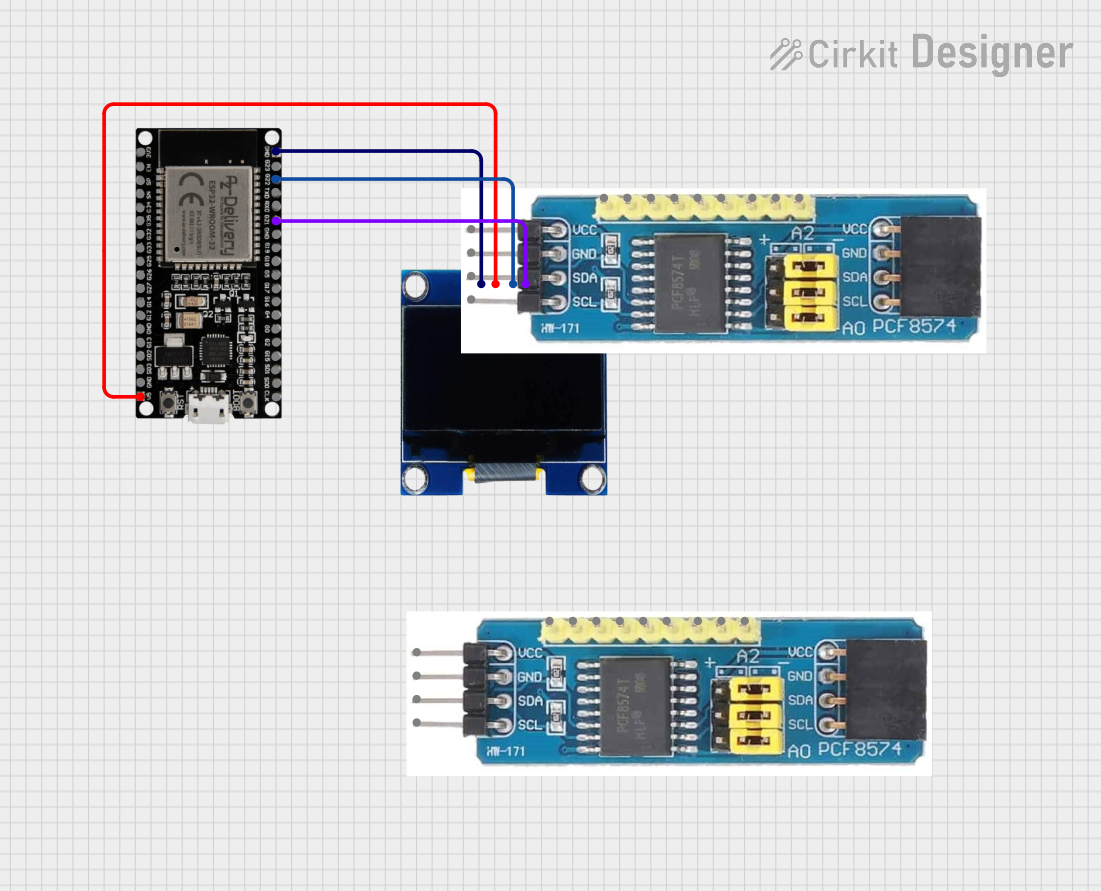
 Open Project in Cirkit Designer
Open Project in Cirkit Designer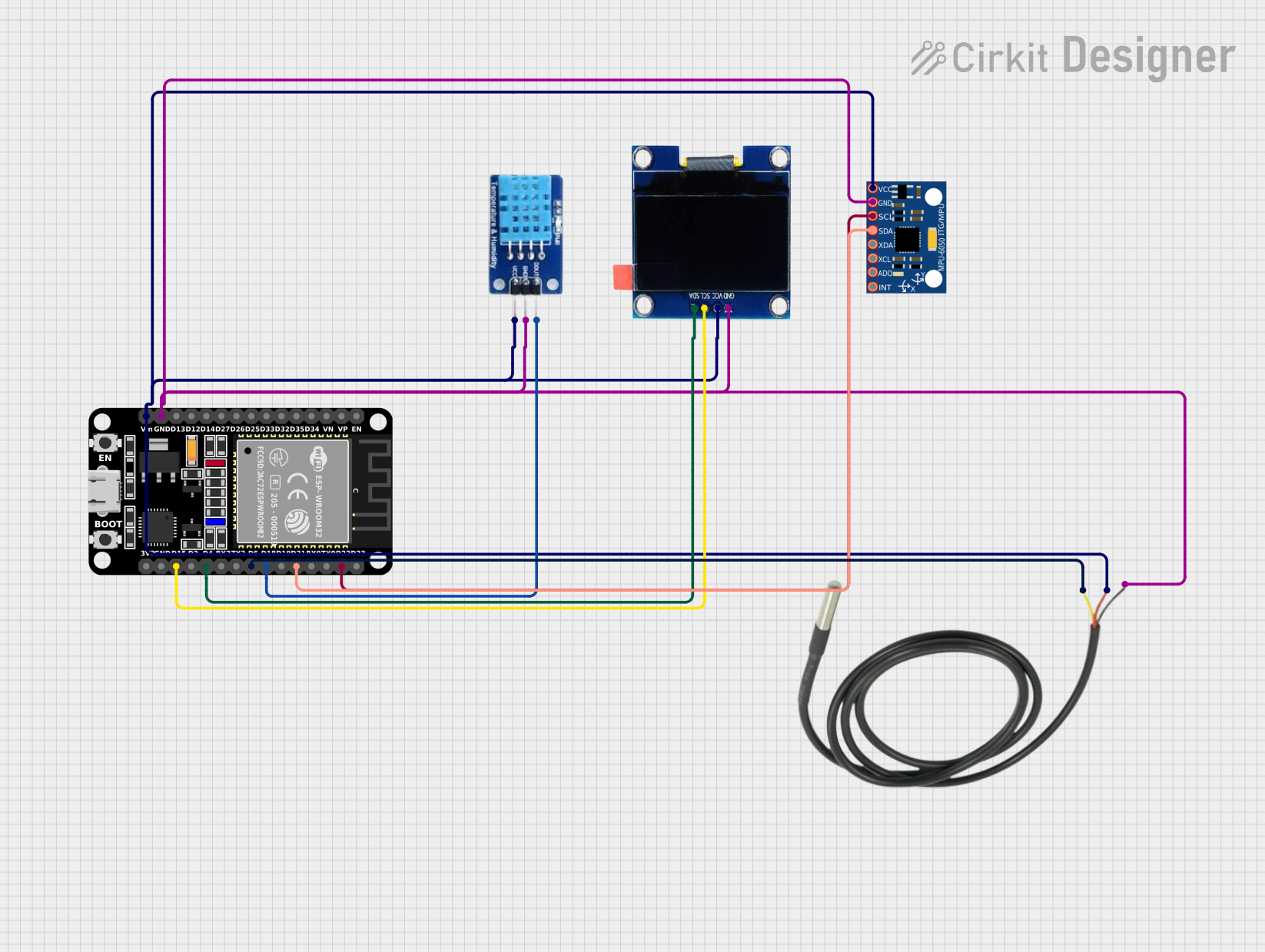
 Open Project in Cirkit Designer
Open Project in Cirkit DesignerExplore Projects Built with ESP32 (30 pin)

 Open Project in Cirkit Designer
Open Project in Cirkit Designer
 Open Project in Cirkit Designer
Open Project in Cirkit Designer
 Open Project in Cirkit Designer
Open Project in Cirkit Designer
 Open Project in Cirkit Designer
Open Project in Cirkit DesignerCommon Applications and Use Cases
- IoT devices and smart home automation
- Wireless sensor networks
- Wearable technology
- Robotics and automation systems
- Data logging and remote monitoring
- Bluetooth-enabled devices and applications
Technical Specifications
The ESP32 (30-pin variant) is packed with features that make it suitable for a wide range of applications. Below are its key technical specifications:
Key Technical Details
- Microcontroller: Dual-core Xtensa® 32-bit LX6
- Clock Speed: Up to 240 MHz
- Flash Memory: 4 MB (varies by module)
- SRAM: 520 KB
- Wi-Fi: 802.11 b/g/n (2.4 GHz)
- Bluetooth: v4.2 BR/EDR and BLE
- Operating Voltage: 3.3V
- Input Voltage Range: 5V (via USB) or 7-12V (via VIN pin)
- GPIO Pins: 30 (multipurpose)
- ADC Channels: 18 (12-bit resolution)
- DAC Channels: 2
- PWM Outputs: 16
- I2C Interfaces: 2
- SPI Interfaces: 4
- UART Interfaces: 3
- Operating Temperature: -40°C to 125°C
Pin Configuration and Descriptions
The ESP32 (30-pin variant) has the following pinout:
| Pin Name | Type | Description |
|---|---|---|
| VIN | Power Input | Input voltage (7-12V) for powering the ESP32. |
| 3V3 | Power Output | 3.3V regulated output. |
| GND | Ground | Ground connection. |
| EN | Input | Enable pin. Pull high to enable the chip. |
| IO0 | GPIO/Boot Mode | GPIO0. Used to enter bootloader mode when pulled low during reset. |
| IO1-IO39 | GPIO | General-purpose input/output pins. Some pins have special functions (see below). |
| ADC1/ADC2 | Analog Input | Analog-to-digital converter channels. |
| DAC1/DAC2 | Analog Output | Digital-to-analog converter channels. |
| TX0/RX0 | UART | UART0 TX and RX pins for serial communication. |
| SCL/SDA | I2C | I2C clock (SCL) and data (SDA) pins. |
| MOSI/MISO/SCK | SPI | SPI data and clock pins. |
Note: Some GPIO pins are input-only or have specific restrictions. Refer to the Espressif datasheet for detailed pin capabilities.
Usage Instructions
The ESP32 is easy to integrate into a variety of projects. Below are the steps and best practices for using the ESP32 in a circuit.
How to Use the ESP32 in a Circuit
Powering the ESP32:
- Use the VIN pin to supply 7-12V, or connect a 5V USB power source.
- Ensure the 3.3V pin is not overloaded, as it is a regulated output.
Connecting Peripherals:
- Use GPIO pins for digital input/output.
- Connect sensors to ADC pins for analog input.
- Use I2C, SPI, or UART interfaces for communication with other devices.
Programming the ESP32:
- Install the Arduino IDE or Espressif's ESP-IDF development environment.
- Add the ESP32 board package to the Arduino IDE via the Board Manager.
- Connect the ESP32 to your computer using a USB cable.
- Select the correct board and port in the IDE, then upload your code.
Example Code for Arduino IDE
The following example demonstrates how to blink an LED connected to GPIO2:
// Define the GPIO pin for the LED
#define LED_PIN 2
void setup() {
// Set the LED pin as an output
pinMode(LED_PIN, OUTPUT);
}
void loop() {
// Turn the LED on
digitalWrite(LED_PIN, HIGH);
delay(1000); // Wait for 1 second
// Turn the LED off
digitalWrite(LED_PIN, LOW);
delay(1000); // Wait for 1 second
}
Important Considerations and Best Practices
- Avoid using GPIO6-GPIO11 for general I/O, as these are connected to the internal flash memory.
- Use level shifters if interfacing with 5V logic devices, as the ESP32 operates at 3.3V.
- Ensure proper grounding to avoid noise and instability in analog readings.
- Use decoupling capacitors near power pins to stabilize the power supply.
Troubleshooting and FAQs
Common Issues and Solutions
ESP32 Not Detected by Computer:
- Ensure the USB cable is functional and supports data transfer.
- Install the correct USB-to-serial driver for your operating system.
Code Upload Fails:
- Check that the correct board and port are selected in the Arduino IDE.
- Hold the BOOT button while uploading to enter bootloader mode.
Wi-Fi Connection Issues:
- Verify the SSID and password in your code.
- Ensure the router is within range and supports 2.4 GHz Wi-Fi.
Random Resets or Instability:
- Check the power supply for sufficient current (at least 500mA).
- Avoid using GPIO pins connected to internal flash memory.
FAQs
Q: Can the ESP32 operate on battery power?
A: Yes, the ESP32 can be powered by a LiPo battery connected to the VIN pin. Use a voltage regulator if necessary.
Q: How do I use the ESP32's Bluetooth functionality?
A: The ESP32 supports both Bluetooth Classic and BLE. Use the BluetoothSerial or BLE libraries in the Arduino IDE to implement Bluetooth features.
Q: Can I use the ESP32 with 5V sensors?
A: Yes, but you must use a level shifter to convert the 5V signals to 3.3V to avoid damaging the ESP32.
Q: What is the maximum number of devices the ESP32 can connect to via Wi-Fi?
A: The ESP32 can act as a Wi-Fi access point and support up to 10 devices simultaneously.
By following this documentation, you can effectively use the ESP32 (30-pin variant) in your projects and troubleshoot common issues with ease.